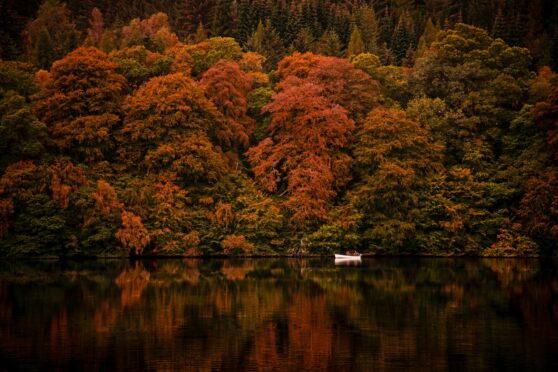
Lonely trees that have survived Dutch elm disease are to be matched with mates in what the leading scientist calls a “Love Island” scheme to provide a native strain to repopulate the Scottish countryside.
Volunteers from the Borders Forest Trust (BFT) are combing the countryside to find mature wych elm trees that have resisted the disease, caused by a deadly fungus carried by wood-boring beetles.
It kills 99% of elms when it reaches an area, and has been found in the Borders since the mid-1970s. Most elms in England have been killed off, and the disease has ravaged much of Scotland, with only the north and west still hosting healthy wych elm populations.
The volunteers are working with scientists from the Royal Botanic Garden Edinburgh (RBGE) who are hoping to find the properties that have enabled the trees to survive.
Elms reproduce sexually, and need another tree to “mate” with, but the disease means there will be no other mature elms to breed with in their areas. Cuttings will be taken from the survivors.
These will eventually be planted together, with the hope that when they reach maturity they will cross-pollinate. This should produce a strain of disease-resistant super-trees.
Wych elm, also known as Scots elm, is believed to be the UK’s only native elm, with English elm thought to have been brought here by Bronze Age people.
Dutch elm disease reached the south of England in the late 60s from imported tree stocks, and hit the Borders a decade later.
Dr Max Coleman, of RBGE, is leading the project. He said the Borders was the perfect place for the project as it had the disease longer than anywhere else in Scotland, so they can be sure any survivors are strongly resistant.
He said: “We can map the survivors and find out how rare they are. We can then propagate them, and bring together a group of these survivors in a location where they have a long-term future, and in relatively short time they breed.
“Then they produce a new generation and we hope there will be genetic advantages among them and we create a resilient population that can then spread. It’s a kind of Love Island for trees.”
Michelle Stamp, of the BFT, is organising the hunt for survivor elms. The public are being asked to report elms they find over two metres in girth – which will definitely date back to before the arrival of the disease. So far, around 20 have been found. Stamp said: “We’re going to lose a whole host of organisms if we lose these trees, so this project is very important.”
As well as being a dating agency for elm trees, the project will see the first full genome sequencing of wych elm, which will enable scientists to pinpoint the reason why some have survived.
The material has been taken from the Jedburgh Giant, a survivor elm in the shadow of Jedburgh Abbey in the Borders town.
Coleman said: “There may be multiple reasons why different trees are surviving – it may not be a single gene solution – but we can work it out with the genome.”
The beetle that spreads the fungus needs early summer temperatures of around 22°C to fly, which is rare in the Highlands.
But, Coleman says: “One of the big worries is climate change is warming the climate so it could be that areas that were disease-free in the past may become within reach of the beetle and hence of the fungus in the future.”
If that did happen, then the new breed of survivor elms could be even more important.
“We can build resilience across Scotland to give this species a future,” he added.

Enjoy the convenience of having The Sunday Post delivered as a digital ePaper straight to your smartphone, tablet or computer.
Subscribe for only £5.49 a month and enjoy all the benefits of the printed paper as a digital replica.
Subscribe